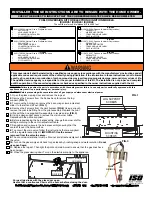Reviews:
No comments
Related manuals for HCT

VEGABAR 65
Brand: Vega Pages: 76

Start
Brand: 3Doodler Pages: 24

HD35
Brand: Napoleon Pages: 4

Dream
Brand: hager Pages: 4

40000
Brand: Camcar Pages: 6

53157
Brand: Hama Pages: 60

M510
Brand: BAFANG Pages: 4

Century
Brand: LAZER Pages: 6

XL Series
Brand: Watcher Pages: 19

PS-3201
Brand: PASCO Pages: 8

TBR7
Brand: Tao Motor Pages: 3

5500DN - Phaser B/W Laser Printer
Brand: Xerox Pages: 2

3600B - Phaser B/W Laser Printer
Brand: Xerox Pages: 2

FU20
Brand: YOKOGAWA Pages: 15

F3102
Brand: Zavio Pages: 31

PT-EP01
Brand: Olympus Pages: 172

1685167
Brand: Snapper Pages: 1

K783W
Brand: Whispbar Pages: 16

















